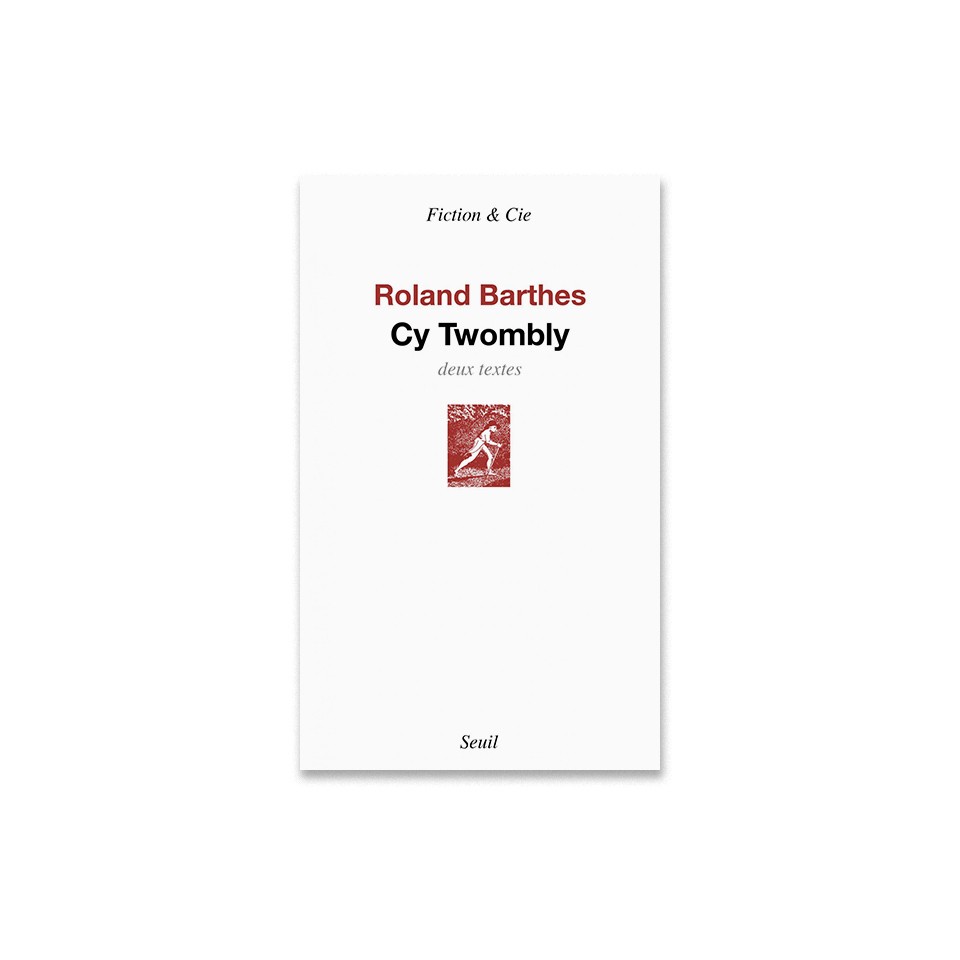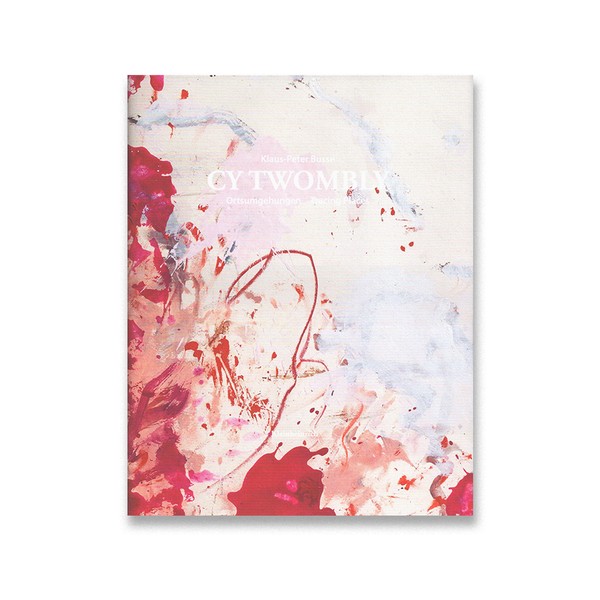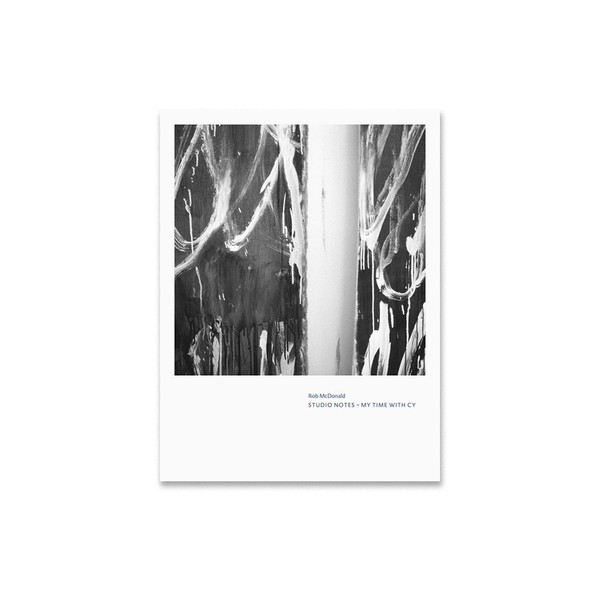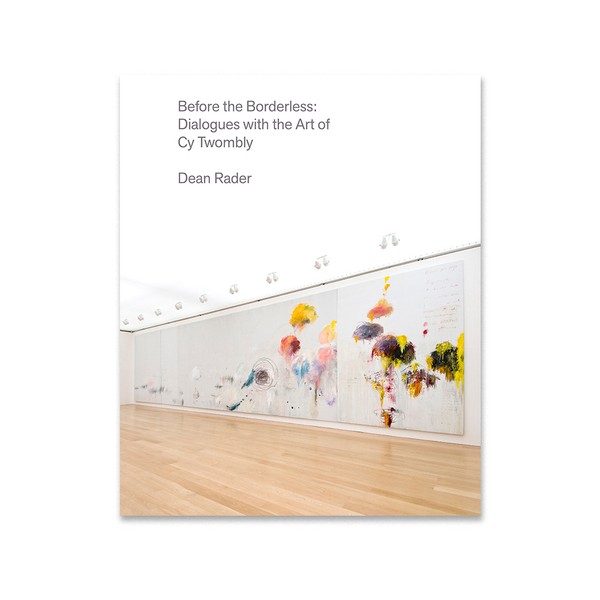Cy Twombly
by Roland Barthes

This volume presents two essays written by Roland Barthes about Twombly: “The Wisdom of Art” and “Cy Twombly, ou ‘Non Multa Sed Multum.’”
“The Wisdom of Art” was originally published in the Whitney Museum of American Art’s catalogue, Cy Twombly: Paintings and Drawings 1954–1977 (1979). Barthes centers this essay on “consider[ing] Twombly in his relation to what constitutes an Event,” asserting that “what happens is a fact (pragma), a coincidence (tyché), an outcome (telos), a surprise (apostedon), and an action (drama)” (9). Each section focuses on one of these classifications in turn. In terms of pragma, Barthes identifies scratching, smudging, smearing as the “gestures through which Twombly enunciates” (10). This section includes two deeply influential and frequently cited passages from Barthes: first, “Doesn’t the schoolboy learn the essence of a table by copying its name laboriously? By writing Virgil on his canvas, it is as if Twombly was condensing in his hand the very immensity of Virgil’s world…” and second, “If a canvas is called The Italians, do not seek the Italians anywhere, except, precisely, in their name. Twombly knows that the Name has an absolute (and sufficient) power of evocation: to write The Italians is to see all the Italians” (both 11). To tyché, Barthes assigns the movements of throwing (“jeté”) and the “appearance of dispersion” (12). With telos, Barthes asserts that “what Twombly’s paintings produce (their telos) is very simple: it is an ‘effect’” (15). Turning to apodeston, Barthes writes that “[t]his surprise takes the appearance of incongruity, derision, deflation, as if the humanist turgescence was suddenly pricked” (17). Drama, for Barthes, takes the form of “a kind of representation of culture” (19), and notes that “suddenly there arises something new, a desire: that of doing the same thing; of going to another worktable (no longer that for writing), to choose colors, to paint and draw. In fact, the question of painting is: ‘Do you feel like imitating Twombly?’” (21).[1]
“Cy Twombly, ou ‘Non Multa Sed Multum’” takes up the designation of Twombly’s work as “child-like” and the role of language in his practice. He frames Twombly as reveling in writing as a gestural act and resists the routinely-made connections between Stéphane Mallarmé’s theories and Twombly’s practice. He asserts that Twombly condenses vast cultural networks within his artworks and plays with the multiple meanings of the French “gauche” as a designation for Twombly’s artworks. He offers extended considerations of color, line, and mortality, and concludes with references to the Marquis de Sade and Japanese haiku. This widely-cited text is also available in Writings on Cy Twombly, ed. Nicola Del Roscio (2002) and Cy Twombly: Fifty Years of Works on Paper, ed. Julie Sylvester (2005).
These are foundational texts for any scholar of Twombly’s practice. Scholars may also wish to consult other major catalogues and monographs, such as: Richard Leeman’s Cy Twombly: A Monograph (2005); Mary Jacobus’s Reading Cy Twombly: Poetry in Paint (2016); Thierry Greub, Inscriptions (2022); Cy Twombly: A Retrospective, ed. Kirk Varnedoe (1994); Cy Twombly: Œuvres sur papier 1973–1977, Musée de Grenoble (2023); Twombly and Poussin: Arcadian Painters, ed. Nicholas Cullinan (2011); and Cy Twombly: Making Past Present, eds. Christine Kondoleon and Kate Nesin (2020).
In 1979 “The Wisdom of Art” was originally commissioned for Cy Twombly: Paintings and Drawings 1954–1977 (Whitney Museum of American Art, New York, 1979) and “Cy Twombly, ou ‘Non Multa Sed Multum’” was originally published in the Yvon Lambert Catalogue raisonné des œuvres sur papier de Cy Twombly, Volume VI, 1973-1976 (Multhipla Edizioni, Milan, 1979).
In 1983 a volume published by Merve Verlag, Berlin, included both texts translated in German.
[1] Note that page numbers correspond to the official English translation in the Whitney catalogue, not the present French language volume.
(Publication description by Jamie Danis)
Cy Twombly by Roland Barthes. Published by Éditions du Seuil, Paris, 2016. 80 pages, French.



